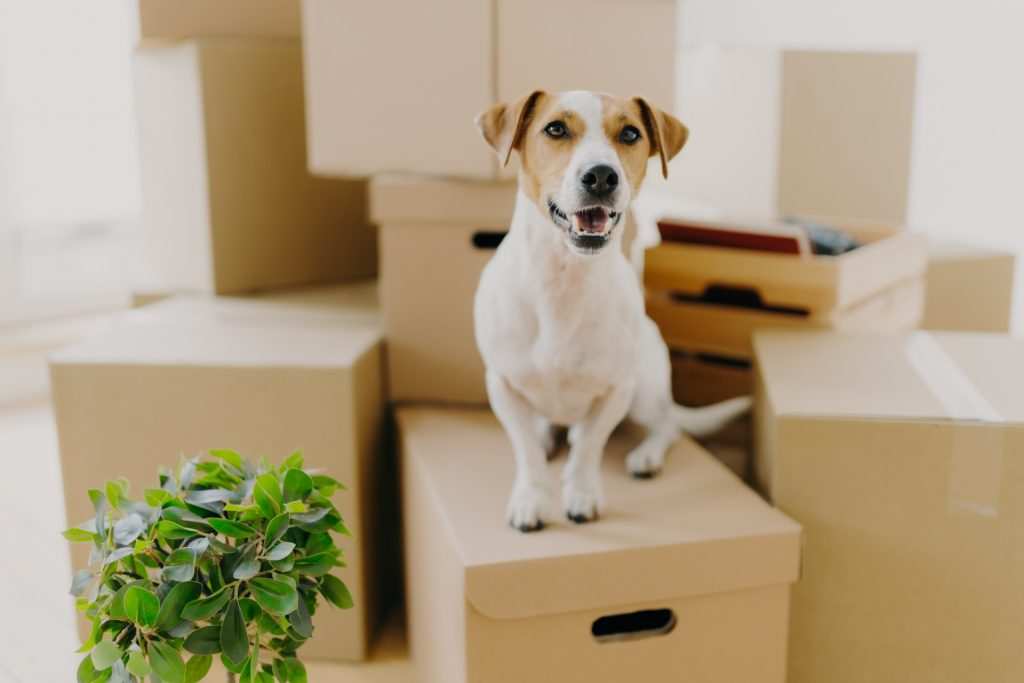Moving homes is an adventure filled with excitement and new possibilities, but for our four-legged family members, it can be a time of uncertainty and stress.
Pets, much like humans, become accustomed to their surroundings and may find the upheaval unsettling.
This blog offers guidance on how to navigate the challenges of relocating with pets, ensuring their comfort and safety throughout the process, and providing tips and tricks to make the transition as smooth as possible for everyone involved.
Understanding your pet’s needs during this time is crucial. Different animals will react differently to the process of moving.
For instance, dogs may become anxious with the disruption in their daily routine, while cats may try to hide or escape.
Recognising these signs of stress and taking steps to address them is key to a successful move for both you and your pets.
Understanding Your Pet’s Needs
It’s important to recognise that every pet is unique, with specific needs and reactions to stress and change. A dog might exhibit signs of anxiety, such as pacing or barking, while a cat might become more withdrawn.
Being aware of your pet’s normal behaviour will help you notice any changes and address them promptly.
Tailoring your approach to meet the individual needs of your pet will go a long way in easing their transition to a new home.
Furthermore, maintaining as much of their normal routine as possible can provide a sense of stability.
Keeping regular feeding times, walks, and play sessions consistent in the lead-up to, during, and after the move can help reassure your pet that not everything is changing.
Pre-Move Preparation
Preparation is key when moving with pets. Start by scheduling a visit to the vet to ensure your pet is healthy for travel, to update any necessary vaccinations, and to discuss microchipping if not already done.
This is also the time to get your pet accustomed to their travel crate or carrier. Introducing it as a safe space in the weeks leading up to the move can help reduce travel anxiety.
Consider creating a pet moving kit that includes food, water, bowls, a leash, waste bags, and favourite toys to keep them comfortable during the move.
Familiar items can help soothe nerves and provide a sense of normalcy amidst the chaos of moving boxes and new environments.
On Moving Day
The hustle and bustle of moving day can be particularly disorienting for pets. Consider arranging for them to stay with a friend, family member, or a professional pet sitter during the busiest times.
If that’s not possible, designate a quiet, secure area in your current home where they can stay until everything is ready to go. Ensure they have access to their crate, water, and comfort items during this time.
When it’s time to travel, make sure your pet is safely secured in their carrier or with a harness and seatbelt designed for pets.
Never leave pets alone in a parked vehicle, especially on hot days, and plan for regular breaks on long journeys to allow them to stretch and relieve themselves. A moving company could also help by working around your pet.
Settling Into Your New Home
Upon arrival, set up a dedicated area for your pet with all their essentials – bedding, toys, food, and water. This will give them a safe spot to retreat to as they adjust to their new surroundings.
Gradually introduce them to other areas of the home, allowing them to explore at their own pace. Pay extra attention to pet-proofing your new home, ensuring that windows, doors, and fences are secure to prevent escape attempts.
Patience is key during this adjustment period. It might take some time for your pet to feel completely at home in the new environment.
Continue to maintain their routine as much as possible and provide plenty of reassurance and affection to help them settle in.
Special Considerations
If you’re moving across internationally, be sure to familiarise yourself with the legal requirements for pets, including any necessary health certificates, vaccinations, or quarantine periods.
Each country and state has its regulations regarding pet entry, and it’s vital to comply with these to avoid any issues upon arrival.
For owners of exotic pets or those with special needs, additional research and preparation will be necessary.
Consult with a vet who specialises in exotic animals for specific advice on moving with these pets, ensuring their health and safety throughout the move.
Conclusion
Moving with pets requires extra planning and consideration, but with the right preparation, the journey can be made less stressful for both you and your animal companions.
Remember, your pets look to you for reassurance and comfort, so keeping calm and providing lots of love and patience will help them adjust to their new home.
Over time, your pet will come to love their new environment just as much as the old one, especially if they have their favourite human by their side.
Get in touch with our team today, for removals in Stoke on Trent.








